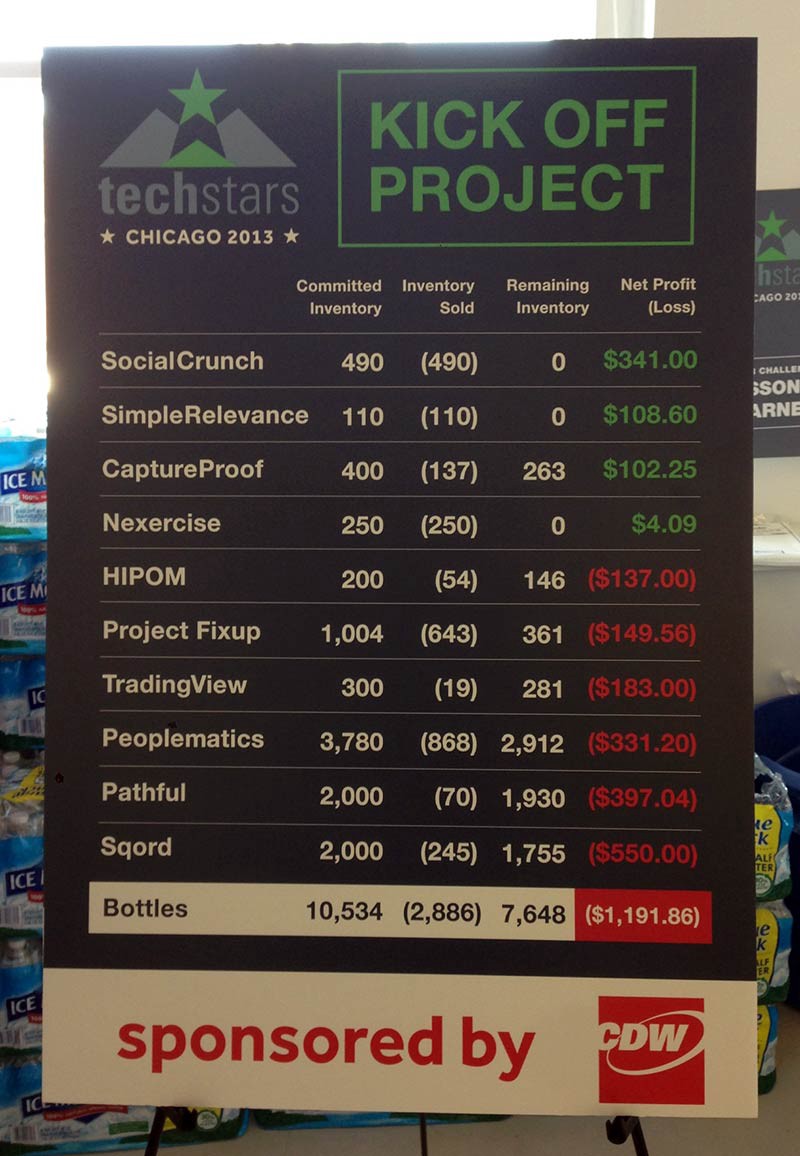A few years back, I did an extended Q&A session at Techstars Chicago. Great group, great questions. I really enjoyed it.
Before the talk, Troy, the guy who ran Techstars Chicago at the time, showed me this board they had propped up on an easel outside the office.
The board listed every company in the current Techstars Chicago class, along with some numbers. The columns included inventory, inventory sold, remaining inventory, and net profit.
Here’s a picture of the board:

These are the results from the challenge. But what was the actual challenge?
The challenge
Each company was told to go sell bottled water. Each company had to decide how many bottles of water they wanted for their inventory. They couldn’t get more later. They had one set of inventory and that was it. They could charge whatever they wanted per bottle.
A few other rules… They couldn’t sell them in the Merchandise Mart (which is the massive building where Techstars Chicago is headquartered), so they had to hit the streets to find buyers.
I believe they had one day to sell their water.
Observations from the results
- The companies that were over-confident lost the most money. In this case I define over-confident as taking on too much inventory.
- 75% of the 40% of the companies that were profitable ended up with zero inventory. If they had a second chance, I wonder if they’d increase the price of their water. It’s impossible to tell from the board when the companies with zero inventory ran out of inventory, but they may have been better off selling their bottles for more and ending up with just a few extra at the end rather than zero. Does zero mean they underpriced their product?
- It’s a lot better to only sell 110 bottles and make a profit of $108.60 than it is to sell 868 bottles and end up losing $331.20. Again, impossible to tell from the chart, but I wonder how much work went into selling 868 bottles only to lose $331.21 compared to how much work went into selling 110 bottles and ending up with a $108.60 profit.
- The top two sellers (Peoplematics and Project Fixup) both lost money.
- SocialCrunch, the company that ended up with the highest profit, were sitting in the front row at my talk 😉
I wonder if the results in the water challenge will mirror the results of the companies themselves if/when they get their own actual products to market.
Overall, I love this exercise. I think this is a great idea. No matter what you do in life, selling is a core skill. And there’s nothing quite like having to hit the bricks and sell your wares. It’s the best teacher you’ll ever have.

